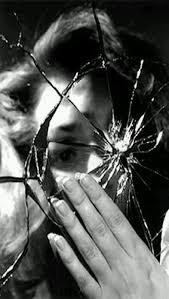Throughout previous texts examined over the course of these posts, we have looked at the various means by which a person is defined, fractured, and reassembled—materially, visually, and aesthetically. Anna Burns’ Milkman offers just that— a trip through the psyche of a freshly-minted adult attempting to discern reality from paranoia, or more profoundly, truth from imagination which leaves us with a striking and unsettling portrait of a schizoaffective reality, defined by constant, repeated trauma.
The novel follows a protagonist only known to us as ‘Middle Sister’ in her attempts to reconcile all which has happened to her, the events continually unfolding in her community, her relationships, and most importantly, the affective experience which these more tangible phenomena evoke within her. This journey is dizzying, as her daily journey only compounds the aforementioned factors confounding her understanding of her world.
When you are lost, you look for landmarks, signs, any indicator which may situate you within this unknown place and help you find your way back. Trauma, similarly, disorients the very basis of one’s ‘place’ in the world, and further infuses it with a perpetual self-doubt, ultimately binding the traumatized to the frightful unreality of a place unknown. But in the case of Middle Sister, these signs are in perpetual motion, never allowing her to cement any sort of orientation within her reality.
The violence and social turmoil which pervades the novel is essential in examining this question of the self. As if she is walking through an earthquake littered with landmines, Middle Sister is forced to carefully tread about her world, for fear of being deemed beyond-the-pale, berated by her mother, or transgressed by Milkman. In such circumstances, she finds herself communicating in half-truths, obfuscations, and emotional omissions. These ‘real’ communications thus define her, both in relationships and reputation, creating an incomplete and somewhat incorrect avatar of herself in the world. In this action, Middle Sister inevitably subjects herself to a negative feedback loop in which the person she has presented herself as does not align with her true internal sentiments, further confounding her self-concept.
This avatar is merely one of many inputs which Middle Sister has to account for her reality. Another, and the most significant, factor influencing her experience of reality is her inner life. That is, her emotions, fears, perceptions, doubts, and world-concepts. Middle Sister is not withholding of these aspects in her narration, sharing her thoughts of what she wanted to say, if she felt like she was being followed, when she felt moments of inexplicable dread. Represented in the ‘click click’ self-surveillance, imposed by the omnipresence of interpersonal surveillance, Middle Sister relays her self-inspired actions to readers whilst quickly reverting within the scene to a modified sense of behavior reflective of her perception of being watched. Her emotions, and candid actions inspired by them (see: the cat head, sneaking into Maybe Boyfriend’s house), can only exist within the confines of herself, enacted in the cover of night. Thus, The milkman is a ‘real’ manifestation of this shapeless paranoia, a terror which haunts her in her moments of most vulnerability.
Her community— comprised of her family, friends, Maybe Boyfriend, Tablets Girl, Somebody McSomebody, Milkman, and others—privileged homogeny and quiet conformity over all. Ma is the most prevalent vocalization of this societal expectation, with her incessant encouragement of marriage and less-than-subtle notes on the impending implications of Middle Sister’s failure to fulfill her duties as a woman. The community represents rules and categories which are meant to sort experience squarely away—but the complications of Middle Sister’s trauma render her unable to do so.
The community’s social mores are reflected in Burns’ scene discussing the sunset, in which Middle Sister’s French class refuse the notion that the sunset may be more than the prescribed, rigid presentations of, “blue (the day sky), black (the night sky), and white (clouds)”. By removing the nuances of gradient, complex colors of orange, pink, and yellow, decision and its deciphering are eliminated from the categorization of reality. The trouble, central to Middle Sister’s existential dilemma, is that more often than not, life operates in the murky area between colors. The area between colors is the ‘irrational’ fear inspired by the Milkman, despite his having never touched her, the undefinition of her relationship with Maybe Boyfriend, the elusive approval of Ma and those in her community.
Operating within these three schemes, it’s no mystery how Middle Sister’s sense of self, situation, and truth became clouded in conflicting, dismissing, and further damaging differing notions of reality. Trauma manifests itself in the individual experience, it is a self-encasing fear which exists solely within the mind of the person affected. But how, in a landscape entrenched in commune and relation, does an individual reckon with such a singular reality?



Love it! Very fresh and insightful.